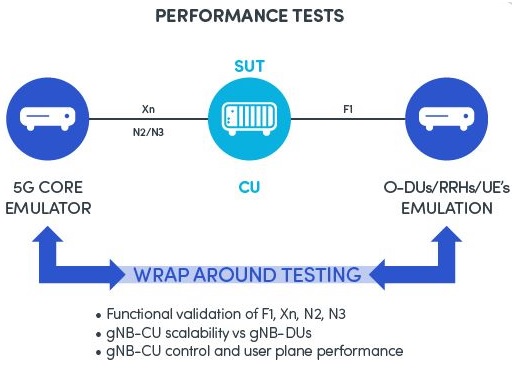In a video interview, James Kimery of Spirent Communications explains how test plays the role of arbiter of communications among radio units, distribution units, and centralized units.
In a world full of wireless and wireline standards, the communications industry has a few more: The interfaces between components of the open Radio Access network (RAN). Without standardized interfaces, interoperability is impossible. Testing is, therefore, essential to ensure compliance with standards, but that’s often not enough. Communications interfaces need interoperability testing. That’s where test equipment comes in, as James Kimery VP of product management at Spirent Communications explains in the video.
In the video, Kimery discusses a concept called “wrap-around testing” where test equipment emulates a network, making a network component “think” it’s operating in a real network. Such testing can improve confidence that a network element will function properly once deployed. Figure 1 shows the concept. The network emulates a 5G core on one side and a distribution unit (O-DU), remote radio head (RRH) and user equipment on the other side. The test validates the F1, Xn, N2, and N3 interface to and from the system under test, a centralized unit (CU). “If we can make the interfaces truly interoperable,” said Kimery, “then we can open up the entire ecosystem.”
Figure 1. Wrap-around testing emulates the network surrounding a system or equipment under test. Image: Spirent Communications.
While open RAN networks are coming online, the decision to deploy O-RAN might depend on whether a company has an installed base or doesn’t, explained Kimery. He’s referring to Rakuten’s decision to install open RAN in it’s new 5G network.
Kimery also discusses , an upcoming addition to the 5G New Radio specification that supports sensors, wearables, and IoT devices.
Related articles:
- Video: 5G NR-Light will serve sensors, wearables, and IoT
- What’s inside Rakuten Mobile’s open RAN radio?
- Open RAN unlocks network functions
- Load Testing: An important function in Open RAN deployment
- Open RAN has rewards, but comes with risks



